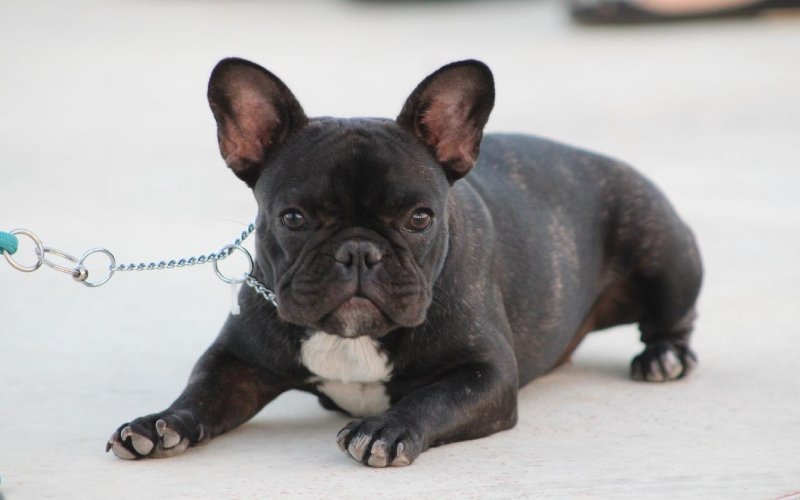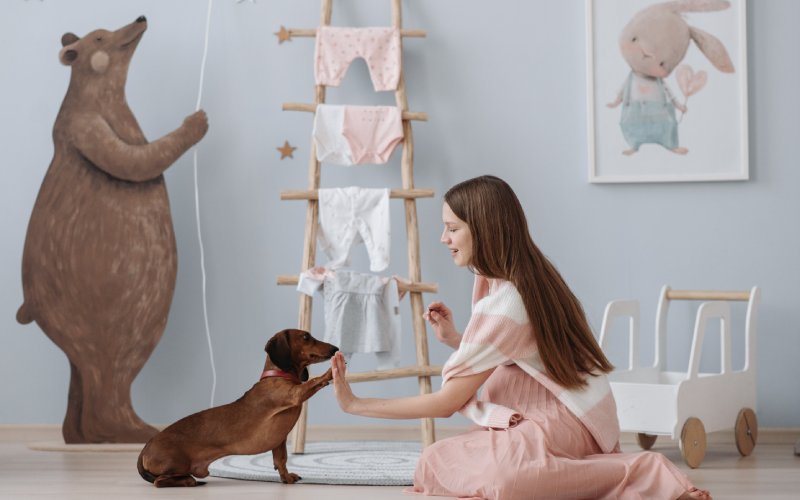At Off Leash K9 Training, Chattanooga (olk9chatt.com, we often get asked about using Puppy Pads. Dog training pads go by various names: pee pads, puppy pads, potty training pads, piddle pads, whelping pads, etc. The purpose of these pads is to reduce your cleanup hassles while you housebreak your puppy. They are either reusable or disposable and come in a square or rectangular shape. Most puppy pads are made of a highly absorbent material that traps urine and liquid messes. They are also designed to reduce odors.
More and more pet parents are using potty pads to make their pup’s potty training easier. After all, reduced cleanup does sound great, doesn’t it? However, things aren’t as straightforward as they seem. Potty training pads may have many benefits but they could also end up being the worst tool in your puppy-potty-training arsenal.
In this guide, we tell you the cons or disadvantages of using dog pee pads or puppy pads and why it may be best not to get your puppy used to them.
Disadvantages of Getting Your Puppy Used to Dog Potty Training Pads
#1. They Limit The Training Progress
Sure, dog potty pads are convenient. After all, who wants to take their dog outside in inclement weather when it is raining or snowing heavily or the sun is beating down mercilessly? People living in apartments also love the advantage of not having to climb down to take their dogs to the dog park.
However, consistent use of puppy pads can greatly limit your dog’s potty training progress. They could negate all the efforts you have made so far.
Once you train your dog to eliminate on the pee pad, you and your dog both get used to the convenience of it. This prevents you from sticking to the potty training schedule.
It is very important to be consistent with outdoor potty training. If you break the rules now and then, allowing your little one to ‘go’ on the pad, your pup is going to end up confused. This can seriously halt the training progress, resulting in setbacks.
#2. They Cause Dependency
Over-reliance on dog potty pads can result in dogs becoming dependent on them. Your pet might start urinating or defecating indoors, thinking it is okay to do so anywhere. Some dogs even mark their territory, as the use of potty pads tends to confuse them. Conversely, some dogs refuse to go unless they have a potty pad available. This could result in the dog holding it in, which can be detrimental to the dog’s health.
#3. Health Hazards for Humans and Other Pets
There are all sorts of germs in your dog’s urine and fecal matter. Pee pads tend to trap these germs and sometimes the mess may leak onto your floor or carpets. This could expose your family to a host of infections and health hazards.
Dog urine contains ammonia and even the slightest exposure to it can result in skin and eye issues, allergies, respiratory disorders, etc.
Dog fecal matter can also contain giardia, leptospirosis, salmonella, and E. coli organisms, which are known to cause debilitating symptoms in humans and animals. Elderly and sick people, older pets, and young kids are at a greater risk of such exposure due to their weaker immune systems.
#4. Bad For The Environment
Different manufacturers use different materials in their puppy potty training pads. However, most pads contain plastic, which is not eco-friendly. This plastic takes years to deteriorate and harms our already overfilled landfills.
#5. Bad For Dogs
Some dog training pad manufacturers use non-recycled bleached materials in their pads. Others add synthetic or chemical fragrances to mask the odors of dog urine and feces. These ingredients can harm our dogs. Sensitive dogs could develop allergic reactions to these materials, resulting in skin rashes.
Naughty young teething puppies may even chew these pads, resulting in choking hazards. The plastic present inside the pads could cause intestinal blockages that may even require emergency surgery to fix.
#6. Cost
The long-term costs of using disposable potty pads are also high. Compared to traditional outdoor potty training methods, the use of reusable and disposable pee pads can lead to a lot of expenditure. By investing time in training your dog to go potty outdoors, you won’t have to continuously buy potty pads, saving a significant amount of money in the years to come.
#7. Alternative Training Methods Are Better in the Long Run
There are many effective training methods to housetrain your young puppy. These include positive reinforcement and crate training. When you consistently and patiently show your puppy where to eliminate the outdoors, you will be creating good bathroom habits in your pet. You will also form a loving bond with your puppy, who will come to rely on you to learn good manners and obedience commands.
Conclusion – What Are The Negatives of Puppy Pads?
As can be seen, the use of puppy pads has several downsides. The major ones include over-dependence, creating confusion in the puppy’s mind, and the health and environmental hazards they pose.
While puppy pads are convenient, they tend to make dog owners lazy. They also tend to halt your puppy’s potty training progress.
We hope this guide helps you choose alternative training methods for potty training your pup.
Give us a call and let us help you with potty training!
423-430-6559
[email protected]
olk9chatt.com



